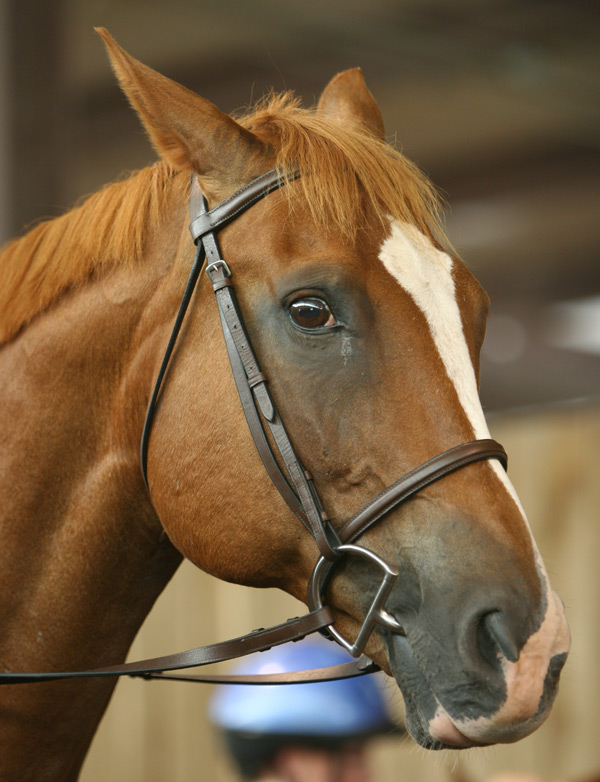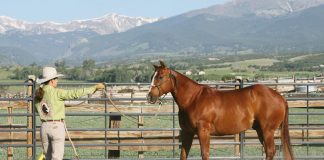
How could something as beautiful and elegant as a horse be dangerous? Easily. Consider his sheer size alone – 1000 pounds or more of mass, muscle, and agility combined with a powerful flight-fight instinct. We humans are fragile in comparison to these mighty creatures. Something as simple as being stepped on by a single hoof can have painful and damaging consequences.
Nipping can lead to biting. Threatening with a lifted a leg can mean an actual kick is imminent. Allowing your horse to rub you with his itchy head sends a message that there are no boundaries, so the next time he may really clobber you or push you over. If your horse walks ahead of you on the lead, you are vulnerable to being kicked, dragged, or run into if he spooks. If you’re standing close and he pulls back while tied, you can be backed over, stepped on, or knocked down. If your horse ignores the cues you give him (on the ground or from the saddle) you could completely lose control, especially in a stressful situation when having control is imperative.
Horses are creatures of habit. When a behavior goes well (it isn’t scary, stressful, or uncomfortable), your horse will be more likely to repeat it. When it doesn’t go well, it doesn’t mean that your horse is “bad”, “stupid”, or incapable of learning. It’s more likely that his behavior reflects his feelings of frustration or anxiety. To help your horse adopt safer behaviors successfully, you need to be:
- Consistent – Handle him the same way every time to make his relationship with you predictable.
- Calm – Avoid anger, frustration, and maintain a low energy level to provide your horse with a leader who is trustworthy, competent, and reliable.
- Complimentary – Praise your horse and allow him time to relax whenever he responds well or makes a good effort.
- Companionable – Spend downtime with your horse that you both enjoy, perhaps extended grooming sessions or relaxing walks.
- Compassionate – Remember that kindness will lower your horse’s stress level – reducing his reactive behavior.
When unsafe behavior does occur, nip it in the bud. For example, if your horse’s shoulder passes yours when you lead him, stop him in his tracks – allowing him to take even one step ahead reinforces the behavior that you don’t want. Praise him for stopping then walk off “without” him, leaving him a couple of steps behind you. As soon as he creeps up, stop, praise, and walk off ahead of him again. Teach your horse that walking ahead of you is not an option and eventually he will stop trying.
Dangerous behaviors are warning signs of problems between you and your horse. They put your safety at risk and should not be ignored. Take steps that replace bad habits with respectful and responsive behaviors. Choose the path to safer interactions with your horse.
Liked this article? Here are others you’ll love:
Get the Better of Bad Behavior
Correct Bucking, Rearing and Bolting
Reasons for Horse Behavior Problems






Good article, very helpful. I need to work with my horse on getting ahead of me on the lead rope.
cool
This is a great reminder! Sometimes I’m guilty of letting things slide. I also like the “5 C’s” you’ve listed, especially the companionable one. Sometimes I forget to take it easy instead of always trying to “make progress.”
Great tips.
My first question is “is the horse in pain”? Then I address it as a behavior/respect problem if pain is ruled out
Great and helpful tips. Thank you
Rustedspur.com. affordable WILD RAGS for the whole family!